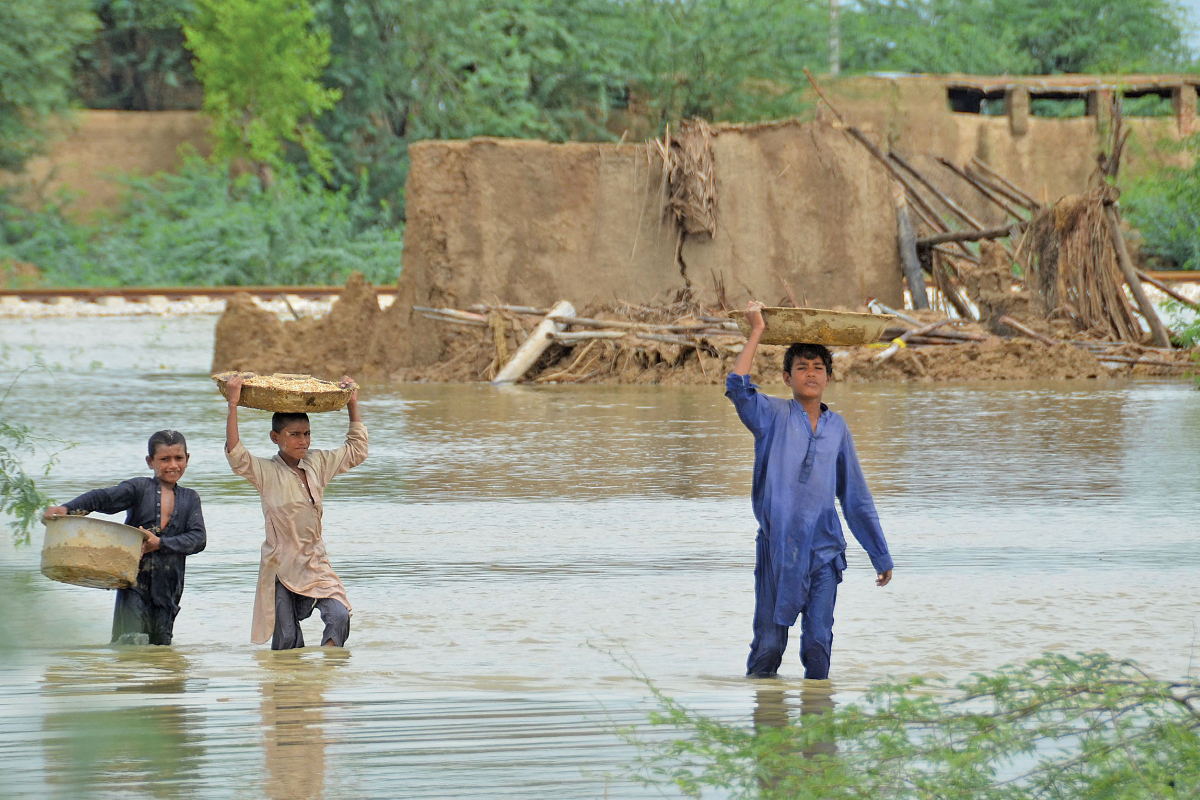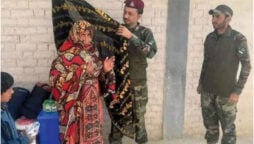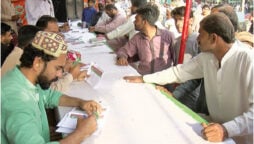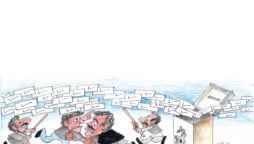
Bearing the Brunt
It will take a lot of time, effort to rebuild what has been lost this monsoon in Balochistan
Balochistan, which is also the most backward area of the country, has borne the brunt of what some experts describe as climate change with almost all districts of the vast province facing loss of human lives, livestock, crops, houses and infrastructure during the recent monsoon.
After the recent spell of rains, flash floods swept away dozens of persons including women and children as well as livestock.
According to the government’s initial estimate, 240 persons died while over 100 others got injured in incidents of electrocution, landsliding, collapsing of houses and drowning. Over 100 people and thousands of livestock also went missing. Around 50,000 houses got damaged or destroyed while around half a million livestock also perished.
Crops, spreading over an area of 0.8 million acres, were damaged while over 30 main bridges including railway bridges were damaged or washed away, cutting off the provincial capital and other parts of Balochistan from the other three provinces for weeks on end. Some 2,500 km of roads were washed away and damaged in different areas.
All three major highways of the province — the Quetta-Khuzdar-Karachi, the Quetta-Loralai-Dera Ghazi Khan and the Quetta-Zhob-Dera Ismail Khan highways – remained closed for weeks due to landsliding and destruction of roads and bridges.
The Quetta-Sibi-Jacobabad road link was also closed while gas supply to major areas including the provincial capital was suspended after heavy floods swept away the Bibi Nani Bridge and main Sui gas supply line in the Bolan Pass coming from Shikarpur pumping station. The Quetta-Dera Ismail Khan and Quetta-Dera Ghazi Khan highways were blocked from Danasar in DI Khan district and Fort Munro in DG Khan district due to landsliding. The Quetta-Karachi highway was closed after a long bridge was badly damaged during a high flood near Uthal town.
The only road link between Quetta and the rest of the country was through the Bolan Pass and the Sibbi-Jacobabad road but during heavy rain and flood on August 24 and 25, this road was also closed.
All these highways and roads were closed for all types of vehicular traffic. The roads for light vehicles were, however, opened after making diversions.
Long ques of trucks, oil tankers and trawlers could be seen near different towns. Fresh fruits and vegetables loaded in these trucks perished even before reaching their destinations while apples and grapes hanging on the trees also started to rot due to excessive rain.
The train service from Quetta to the rest of the country was also suspended due to minor damages to the rail track in different sections particularly near the Bolan Pass. After a flash flood, a rail bridge built by the British on a seasonal river near Hirak close to Machh also collapsed. Due to torrential rains for three days, Quetta’s district administration declared an emergency in all the hospitals and asked doctors and staff to ensure their presence to cope with any emergent situation.
The provincial government already declared all the 34 districts of the province “disaster-hit areas” in the wake of torrential rain while the staff of the Provincial Disaster Management Authority (PDMA) and district administrations started rescue and relief activities. “Despite these efforts, a lot is needed to be done to provide relief to the people in far-flung areas of the province,” said a PDMA official while requesting anonymity.
He said a majority of the people affected by floods and rains are forced to live in the open despite rain. In a number of districts, people have also started to protest due to uneven distribution of relief goods, he said.
On order of Army Chief General Qamar Javed Bajwa, 12 Corps Commander Lt Gen Asif Ghafoor sped up rescue and relief activities by deploying 4,500 jawans and officers of the Pakistan Army for the help of district administration across Balochistan.
Lieutenant General Asif Ghafoor told the media during his visit to the PDMA warehouse that the Pakistan Army had been deployed in the flood-affected areas to cope with any emergency situation.
The jawans and officers of the Frontier Corps Balochistan who are already performing security duty in almost all districts are also engaged in the rescue and relief activities. They are also distributing food items and setting up medical camps particularly in remote areas. Relief goods have also been dispatched by the National Disaster Management Authority (NDMA) and the Khyber Pakhtunkhwa (KP) and Sindh governments for the flood and rain affected people of Balochistan. These goods have already been distributed. However, Balochistan Chief Minister Abdul Quddus Bizenjo has remained confined to his office and residence during these crucial times and has only visited Hub town once. He has, however, reviewed the situation of flood through helicopter twice.
During floods, chief ministers and their cabinet members usually visit the affected areas and meet the people but Bizenjo and his cabinet members seem to have decided to break this norm. With the exception of Mir Ziaullah Langau who is both the provincial home minister and the in-charge of the PDMA, no other cabinet member of Bizenjo has visited any disaster-hit neighborhood other than those located in their own constituencies.
They are active only on social media where they post pictures of their visits to their respective constituencies, probably to keep their vote-banks intact.
Quetta situation
Quetta, a valley surrounded by mountains, used to be a small hill station during British rule. However, with the passage of time, the population of the city increased tremendously and land mafia started building houses even on waterways with the connivance of the revenue department. Although the district administration removed encroachments on seasonal Nullas in some areas, a massive operation is needed to clear all the encroachments.
Once rainwater disappeared within hours but now even normal rain can lead to standing water even on roads close to the Red Zone where the Governor House and the Chief Minister Secretariat, the Judges Lodges and the Civil Secretariat are situated.
Some 20 years ago, a provincial government had also laid new sewerage lines at a cost of billions of rupees to tackle this issue of rain water but these lines are now choked due to silting.
Catch all the National Nerve News, Breaking News Event and Latest News Updates on The BOL News
Download The BOL News App to get the Daily News Update & Live News.












 Read the complete story text.
Read the complete story text. Listen to audio of the story.
Listen to audio of the story.